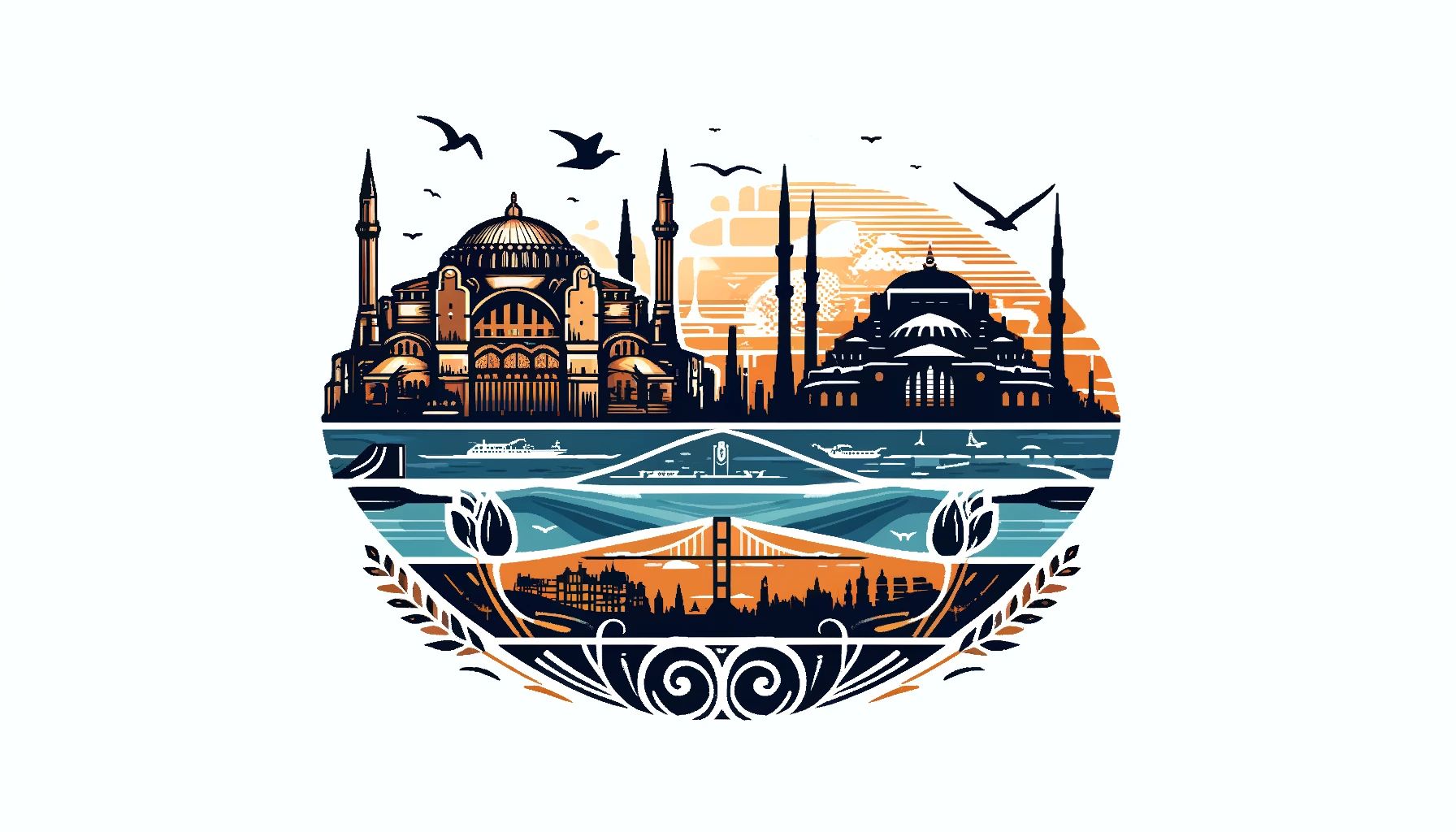Hagia Sophia, originally built in 537 AD during the reign of the Byzantine Emperor Justinian I, has served multiple religious functions over the centuries. Initially, it was an Eastern Orthodox cathedral, later a Roman Catholic cathedral during the Latin Empire, and then, following the Ottoman conquest of Constantinople in 1453, it was transformed into a mosque. Here’s a detailed look into the layers of history, architecture, and cultural significance of this iconic structure.
The current structure of Hagia Sophia is known for its massive dome, which was a marvel of its time and drastically changed the history of architecture. It was one of the first to employ a fully pendentive dome structure, influencing the architectural design of other religious buildings, including many mosques in Istanbul.
Hagia Sophia has served multiple religious purposes—it was an Eastern Orthodox cathedral, a Roman Catholic cathedral during the Latin Empire, and later, a mosque after the Ottoman conquest. This transformation is reflected in its rich tapestry of religious art, from Christian mosaics to Islamic calligraphy.
In 1935, Mustafa Kemal Atatürk, the founder of the Republic of Turkey, secularized Hagia Sophia and converted it into a museum in an effort to emphasize the secularism of the new Turkish Republic. It remained a museum until 2020, when it was reconverted into The Hagia Sophia Mosque.
The architectural style of Hagia Sophia has deeply influenced many other religious buildings throughout Istanbul and beyond. Its style is marked by Hagia Sophia’s dome architecture, a significant achievement in the history of engineering.
Hagia Sophia is part of the „Historic Areas of Istanbul,“ a UNESCO World Heritage site recognized in 1985 for its critical historical and cultural significance.
The interior of Hagia Sophia is adorned with mosaics, marble pillars, and coverings that highlight both its Christian origins and Islamic conversions. The restoration of these images has been ongoing since the 19th century, particularly after periods of Byzantine Iconoclasm when many religious depictions were destroyed or plastered over.
The original dome of Hagia Sophia collapsed several times due to earthquakes and was rebuilt each time, with the current dome being a reconstruction from the 6th century.
Beyond its religious and historical significance, Hagia Sophia is a symbol of the harmonious and sometimes contentious religious history between Christianity and Islam, embodying the cultural layers of Istanbul.
Hagia Sophia was originally constructed as a Christian cathedral under the order of Byzantine Emperor Justinian I and was dedicated in 537 AD. It served as the cathedral of Constantinople (now Istanbul) for almost 1,000 years. Look up the History.
Hagia Sophia was converted into a mosque after the Ottoman Empire, led by Sultan Mehmed II, conquered Constantinople in 1453. The conversion involved several changes, including the addition of minarets and the removal of Christian iconography.
Hagia Sophia was secularised and converted into a museum in 1935 by Mustafa Kemal Atatürk, the founder of modern Turkey, as part of his efforts to emphasise secularism in the Turkish Republic. It remained a museum until 2020.
Hagia Sophia is famed for its massive dome, which for many centuries was the largest in the world. It is considered a masterpiece of Byzantine architecture and was innovative in its use of pendentive dome construction, allowing for a circular dome over a square room.
Yes, Hagia Sophia is currently open to the public as a mosque. Visitors can enter outside prayer times, and it remains a popular tourist attraction in Istanbul, offering insight into both its Christian and Islamic heritage.
